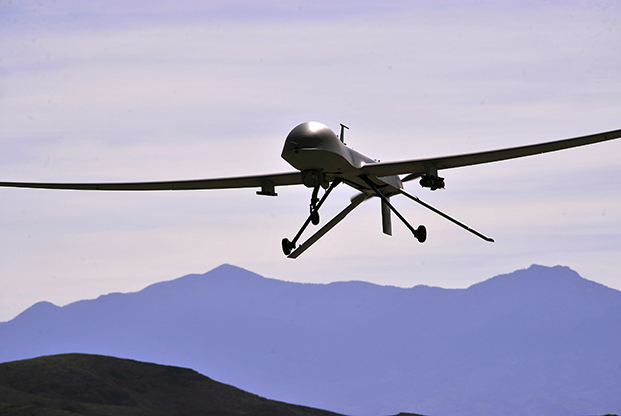
An MQ-1B Predator remotely piloted aircraft — like the one lost while supp?orting a combat mission in the US CENTCOM AOR in September 2017 — passes over the air field at Creech AFB, Nev., during a May 2013 training mission. Air Force photo by the 432nd Wing/432nd Air Expeditionary Wing.
An MQ-1B Predator was lost while supporting a combat mission in the US Central Command area of responsibility on Sept. 4, 2017, after the satellite link connecting the mission control element to the aircraft failed and airmen were not able to re-establish contact, according to an abbreviated accident investigation board report released on Monday.
However, officials could not determine what caused the link to break, citing “insufficient evidence of any substantially contributing factors,” according to the report.
The Predator, tail number 05-03143, was assigned to the 432nd Wing at Creech AFB, Nev., but was being operated by a mission control element from the 432nd Air Expeditionary Wing when it was lost.
The aircraft was roughly 16 hours into its mission and was flying at a medium altitude of 13,000 feet when the mission crew changed over. About a minute after the new crew took control of the cockpit, it lost complete video and command link. While attempting to regain control, the mission crew and the operations supervisor contacted radar facilities and a fighter aircraft operating in the area to see if they could locate the remotely piloted aircraft in the vicinity of its last known position or along the pre-programmed emergency mission route, which the aircraft should have flown once the connection was lost. The aircraft and crash site were never found. The estimated cost of the lost Predator is $4.09 million.
The crew sent the data logs to the Air Force Life Cycle Management Center’s MQ-1 Predator System Program Office Logistics Section, but an analysis of the cockpit systems found no aircraft system malfunctions. Both the pilot and the sensor operator were qualified to conduct operations and had plenty of experience. Investigators found the crew was qualified to fly, health or toxicology were not factors, and the crew had had plenty of rest. Operations tempo did not appear to be a contributing factor either, states the report.
“Since post mishap analysis of the data loggers did not reveal any issues with the cockpit or the [mission aircraft] immediately prior to the lost link and the aircraft was never found, there is insufficient evidence to determine the chain of events beyond the lost link,” states the report.